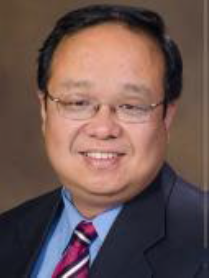Additive Manufacturing for Antennas and Electronics from GHz to THz
Webinar by Prof. Hao Xin- University of Arizona, USA
A Distinguished Lecturer Of IEEE Antennas and Propagation Society
Date and Time
Location
Hosts
Registration
-
 Add Event to Calendar
Add Event to Calendar
Loading virtual attendance info...
- Contact Event Host
- Co-sponsored by American University of Beirut Maroun Semaan Faculty of Engineering and Architecture Electrical and Computer Engineering Department
Speakers
 University of Arizona, USA
University of Arizona, USA
Additive Manufacturing for Antennas and Electronics from GHz to THz
Additive manufacturing technology, often called 3D printing, have received much attention recently with impressive demonstrations ranging from musical instruments, to vehicles, to housing components or even entire buildings. Different structural materials including metal, polymer, ceramics, biological tissues and even concrete, have been incorporated in various 3D printing technologies. Printing dimension ranging from nanometers to meters has been reported. This presentation will highlight several research projects being carried out by Prof. Hao Xin’s group in the area of 3D printed components and potential systems for GHz to THz operation. Various printing techniques such as polymer jetting based on photosensitive polymer, fused deposition modeling using thermal plastics, etc. will be compared for their applicability for RF antennas and electronics applications. A number of demonstrated examples including electromagnetic crystals, waveguides, antennas, phased array, gradient index lenses and holographic devices will be presented. Interesting applications of these 3D printed structures such as a new type of lens array for electronic beam scanning will also be described. Some of the important future research directions and challenges including potential novel designs enabled by 3D printing technology, development of additive manufacturing compatible materials with desired electromagnetic properties, and simultaneous printing of high quality conductor with other non-conductor materials will be discussed as well.
Biography:
Hao Xin Bio: Dr. Hao Xin is a professor of Electrical and Computer Engineering, and professor of Physics at the University of Arizona. He is also an IEEE Fellow. His current teaching and research interests are on high frequency (from microwave to THz) technologies, including passive and active circuits, antennas, properties and applications of new materials such as metamaterials and nano-materials for wireless communication, sensing, bio-medical, and energy harvesting. In 2016, he co-founded and served as the CTO and president of Lunewave Inc. to commercialize 3D printed Luneburg lens antennas for automotive radar sensors. Before joining the University of Arizona, he worked as research scientist at Rockwell Scientific Company and as Sr. Principal Multidisciplinary Engineer at Raytheon Missile Systems. He has published over 350 refereed papers and over 20 patents in related research areas. He served as the general co-chair of the 8th International Antenna Technology Workshop and the general secretary of the 39th International Infrared, Millimeter Wave and THz Conference. He was an associate editor for IEEE Antennas and Wireless Propagation Letters from 2012 to 2018. He is an associate editor for IEEE Antennas and Wireless Propagation Magazine and IEEE Journal of Radio Frequency ID. He currently serves as the chair of the Young Professionals Committee of the IEEE Antennas and Propagation Society. He is also the Tucson joint chapter chair of IEEE Microwave Theory and Techniques / Antennas and Propagation societies. Dr. Xin has current and previous research support (overall > $14M, individual expense > $8M) from DARPA, ARO, AFOSR, ONR, NSF, AFRL, and industry for his research on a broad range of topics related to microwave engineering. He has graduated and mentored 11 post-docs, 16 (including 6 visiting) PhD students, 10 MS students, and more than 60 undergraduate students. Currently he supervises 3 Post-Doc, 5 PhD students, 2 MS students and 2 undergraduate students.
Address:Lebanon
Agenda
3:00 PM intrduction
3:05 PM lecture

